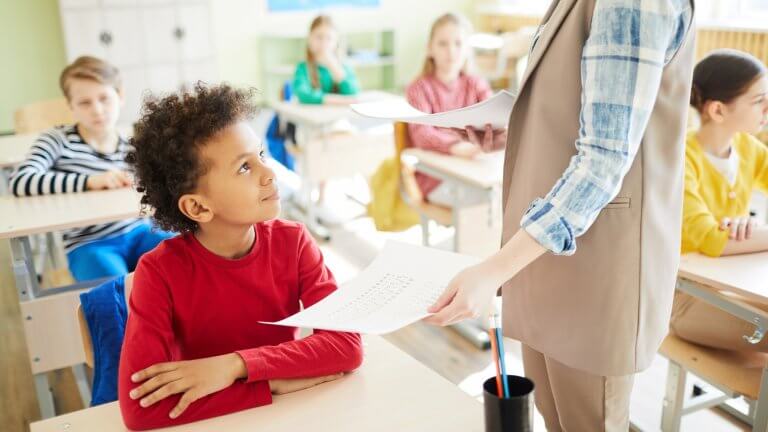One question I get asked when I teach my classroom management class is, “What is the best punishment for a student?” I reply, “There is none.” I’m sure the participants wonder why I’m qualified to teach classroom management! What I do share with my participants is using consequences instead of punishment. There’s a difference between reinforcement and punishment that revolves around using logical consequences instead of punishments.
What Are Punishments?
Punishment is defined as “suffering, pain, or loss that serves as retribution.” Fearfulness and anger stir punishment. Quite frequently, punishment tries to get the child to do something we want them to do. But when punished, children may start feeling discouraged and resent the adults. It can actually look like a withdrawal of love. This weakens the relationship between the child and adult. Punishment does stop the behavior but it doesn’t teach the child how to solve problems. Punishments invoke shame for the child.
What Are Consequences?
Consequences are a bit different. They’re described as “a conclusion derived through logic.” Logical consequences teach because they are related to the behavior. It helps children learn how to control themselves. Logical consequences are behavior outcomes that are specifically planned by teachers and other adults. The ultimate goal would be to teach students an improved approach to their negative behavior because we definitely want to stop it. Logical consequences help children think about their behaviors and what the results would be with the choices they make. In this respect, teaching consequences is more effective. In a nutshell, consequences = learning.
You play the role of supporter as the teacher. As such, it’s essential that you help students understand that consequences are the result of their actions and choices, not yours. Your obligation is to help them learn how to face the consequences and how to make better decisions in the future
Logical consequences involve the teacher gathering information before reacting. Occasionally with input from the child, the teacher takes time to evaluate the circumstances and determine what will help fix the problem. The use of logical consequences helps children fix their mistakes and know what to do next time. Teachers need to reflect on a few issues when thinking about logical consequences:
- The age of the child
- Have rules been explicitly taught?
- The behavior that is causing the problem
- How the problem can be resolved
Here are some examples of logical consequences:
- Have a student take time to calm down and apologize to a classmate, and then work to fix any damage they caused. The teacher could also have the student come up with ideas and write ways to avoid something like that happening again.
- If a child refuses to wear his coat, he isn’t allowed to go outside and play with the other kids on the playground.
- If a child throws food on the floor in the cafeteria, he cleans it and he will finish his meal at another table.
- A child doesn’t clean up around his desk. You take away his electronics privileges until cleanup is completed.
Children do want to do better. When children are punished, they will do better because they fear punishment. Behaviorist research has clearly shown that punishment does not work. It makes a behavior disappear as long as the punisher is around. When logical consequences are used, adults reflect, help children learn how to face the consequences, have children practice their new behaviors and teach them a lifelong skill of making better behavioral decisions.
Linda Kutach is a behavior specialists working on the Behavior Team at Region 13. She specializes in School Safety and handling tough kid behavior.





Add comment